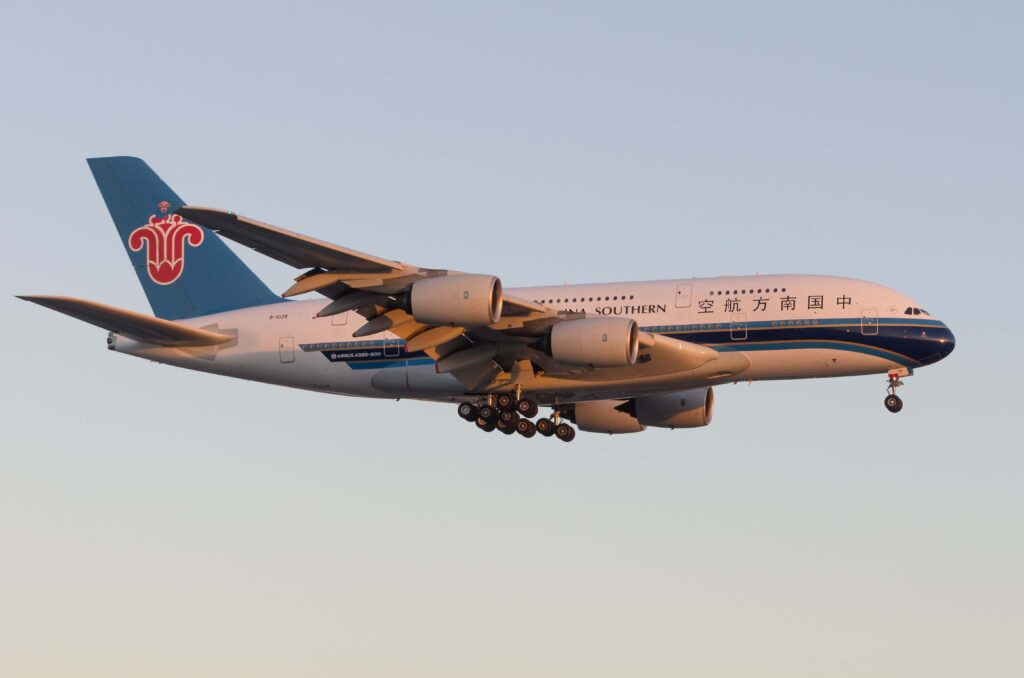The status of the Super Jumbo has been questioned even before the pandemic took its toll on the air transport sector. As flying operations became almost solely devoted to cargo and the skies fell quiet, some airlines single-handedly wrote off the Airbus A380 mainly because of its operational inefficiency. However, others remained strong believers in the double-decker.
Let’s take a look at what the future holds for China Southern Airlines Airbus A380, as the airline may hold the throne of being the first and the last A380 operator in China.
China Southern Airlines ‒ the only A380 operator in China
Airbus delivered the first Airbus A380 aircraft to China Southern Airlines (ZNH) in October 2011. Thus, the airline became the world’s seventh and China’s first Super Jumbo operator.
“We are proud to become the first A380 operator in China,” said Si Xianmin, the former chairman of China Southern Airlines (ZNH). “The introduction of the A380 in our fleet is a very important step for the development of China Southern. The economics offered by the A380 will undoubtedly improve our competitiveness on international routes and is the perfect asset to make China Southern Airlines (ZNH) achieve its goal of becoming a leading global carrier.”
Powered by Rolls-Royce Trent 900 engine, the A380 was initially introduced on domestic routes between the major Chinese cities of Beijing, Shanghai, and Guangzhou. Later, the airline deployed its double-decker on international routes.
At the ceremony in 2011, China Southern Airlines (ZNH) unveiled its A380 cabin, featuring a total of 506 seats in a typical three class configuration, including eight first-class suites, 70 lie-flat business-class seats, and 428 economy-class seats.
Out of all Airbus A380 operators, China Southern Airlines (ZNH) is one of the smallest Super Jumbo customers in the world, having a total of just five A380s in its fleet with an average age of 9.8 years.
The COVID-19 pandemic ‒ a deal breaker for China Southern A380?
Citing the similar dilemma faced by many other airlines, a senior vice president of China Southern Airlines (ZNH), Guoxiang Wu, said the operator “must [be – ed. note] rethinking” the future of Airbus A380 aircraft. Wu’s remarks came out in response to forecasts showing that international air travel might take years to recover from the impact of the COVID-19 pandemic.
On April 14, 2021, China Southern Airlines (ZNH) senior executive raised doubts about the relevancy of the world’s largest passenger aircraft, as borders were still being kept closed and the international air travel recovery was shadowed by new COVID-19 variants appearing and slow vaccination rates across the globe.
“The largest aircraft in our fleet, such as the Airbus A380 is still under our consideration on how we can solve this problem,” Wu said during the CAPA Live event. “The operation cost is very high, and to meet the future demand for the international routes, we still do not have the signal of recovery in the coming years. So we must be thinking about the structure of our fleets, especially for the widebodies.”
Despite concerns about Airbus A380 aircraft operational inefficiency during the COVID-19 pandemic, all the airline’s Super Jumbos have been in service recently, Flightradar24.com data shows. China Southern Airbus A380s were mostly operating from Guangzhou to cities of Australia, Europe, the United States, Japan, and Canada.
The most recent flight CZ344 took place on July 7, 2021. The Airbus A380-841, registered as B-6136, took off from Melbourne Airport (MEL), Australia, and touched down at the carrier’s main hub ‒ Guangzhou Baiyun International Airport (CAN), China.
While China Southern Airlines (ZNH) are raising their doubts about the future of Super Jumbo in its fleet, the operator seemingly has no plans to ground the entire Airbus A380 fleet for good just yet, as the airline’s Airbus A380 aircraft are still being seen in the skies.

